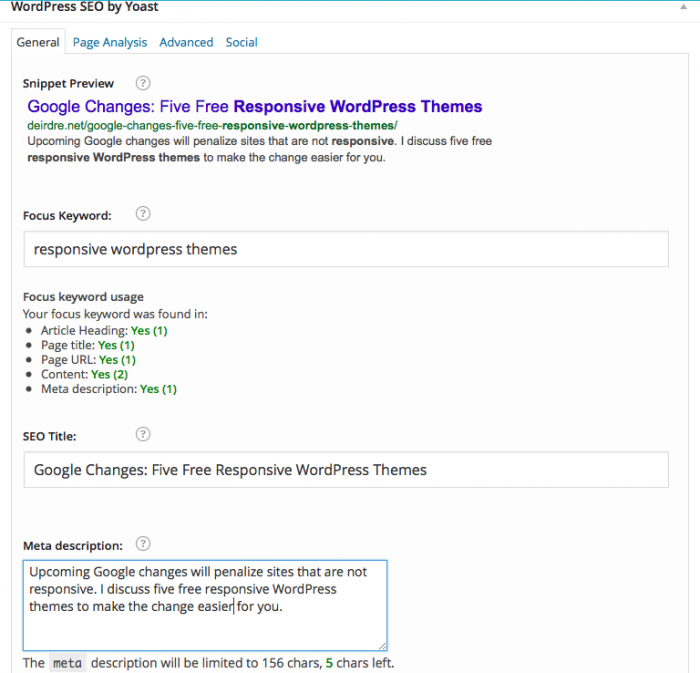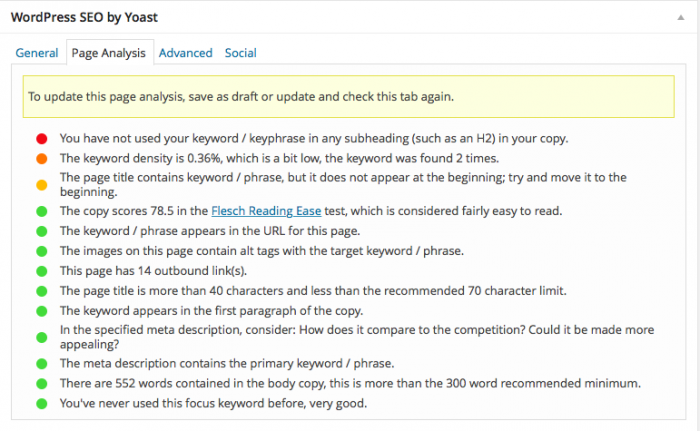Google Changes: Five Free Responsive WordPress Themes
16 April 2015

Google’s making huge changes in how they’ll rank web sites, and those changes take effect next week on April 21. Google has warned that sites that are not responsive will be penalized in rankings. If you run WordPress sites, then switching to responsive WordPress themes will prevent you from losing your Google juice.
You may be saying: ZOMG! What do I do?
(At the end, I’ll have a new thingy for you author types.)
Five Free Responsive WordPress Themes
If you have a self-hosted WordPress site and haven’t done a ton of customization to your theme, here are some themes that will at least get you over that hump.
- TwentyFifteen. It comes with WordPress, it’s boring (I mean: content-focused) as all get out, but it’ll get you there. In particular, you know it’ll support just about any WordPress feature since it’s a core theme. One downside: there are only two child themes currently (and I don’t care for either of them), but you can design your own.
- Pinboard. As I’ve mentioned before, I use this one for ryanjohnsonactor.info. There are no child themes that I know of, but it’s a solid theme.
- Virtue. Not only is it free, not only is it responsive, but it’s also designed for Woocommerce if you happen to want a store with your site. There are no child themes. I haven’t used this one.
- Vantage. This is a free theme that wraps around a plugin, PageBuilder. I haven’t tried it, but it appears that it would permit easier customization for most people than child themes would, without the expense of costly solutions like Headway or Dynamik (which I use on some sites).
- Omega. This is a wonderful free theme that has inspired quite a few other free child themes. Here are three of them: Composer, Hotel, and Church. You can find even more with this search.
Note that I’ve only added responsive WordPress themes that are free, not “lite” versions of commercial themes that are often omitting really basic features so that you’ll pay for it. One of those features often missing? Responsive.
A Child Theme Primer
For those of who who’ve never used WordPress child themes, they are a spectacular feature.
- A child theme, at its most basic form, is a new folder in the WordPress theme directory that contains a stylesheet (named style.css).
- A child theme can also contain new WordPress functions that may alter the parent’s theme, which I do in Ryan’s site. (And deirdre.net, also, as I have changed the way the header looks—substantially—from the StudioPress Metro Pro theme it started out as.
- A child theme can also contain any other resource a theme can, including graphics, fonts, and JavaScript.
Essentially, it’s installed just like any other WordPress theme, it’s just that you need both the child and the parent theme installed for it to work.
Once You’ve Changed Your Theme, Now What?
- Log into Google Webmaster Tools. If you haven’t verified your site, go through the steps to do that. Read carefully about any issues Google says your site has, then fix them.
- For the love of your readers, please use permalinks. You’re not going to remember, and neither will I, that this post is deirdre.net?p=5024 a day from now. From the WordPress admin interface, go to Settings -> Permalinks. Click on “post name” (or anything other than “default”), then click Save Changes. This will help your site rank better.
- Install an SEO plugin. There are two that are particularly well-regarded: All-in-one SEO Pack and Yoast’s WordPress SEO. I use the latter. Both will coach you on how to improve your page ranking. It’s like having your own copywriting coach.
Here are two screencaps taken while I was drafting this article:


Is it Really Worth All That Effort?
As a marketing coach I know phrased it: “No one ever complained about having three times as much Google traffic. For free.” And that’s true. All you’re doing in changing to responsive WordPress themes is making it easier for people to find your site.
I don’t know why Google’s pushing this change specifically, but I’ve been really frustrated with horrible mobile experiences. Bad mobile sites cause a higher bounce rate. Reducing bounce rate is also critical to ranking, so you may find that you get a lift in traffic. I mention in that link that I was testing something, and that test has been successful. I’ll write about it next week.
StudioPress’s New Author Theme
Less than ten minutes before I planned to post this, I found out about a new paid theme I’m super excited about.
One of the huge problems of author-friendly themes out there is that most are designed for one book. They’re inevitably badly designed for the face that book covers are (not universally, but nearly so) tall rather than wide or square, and almost all WordPress themes use landscape or square images.
That kind of thing? Will drive you crazy over time.
I was in the middle of fussing with some theme constraints, and now I’m packing in that project because StudioPress, author of the Genesis themes family, has a new Author theme.
Further, even if you don’t want that particular Genesis theme, there’s a free Genesis Author Pro plugin that’ll work with any Genesis theme.
StudioPress themes are lean, optimized for speed and search engine optimization. I’m really glad I switched last year. I was in the middle of making some changes, so I may well switch to the Author Pro theme myself.